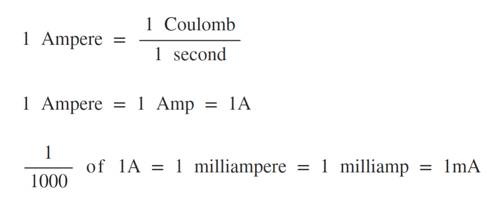The ampere is one of the foundational units in the International System of Units (SI), traditionally defined by the constant flow of electric charge. Historically, an ampere was established in terms of the force between two parallel conductors, but this definition has undergone profound transformations in recent years. Redefining the ampere through a more precise understanding—down to the level of electrons—illuminates not only the intricacies of electrical measurement but also the broader implications on our comprehension of the fabric of the universe itself.
The ampere, symbolized as “A,” is fundamentally a measure of electric current. Specifically, it delineates the flow of electric charge across a conductor. One ampere is conceptualized as a flow of one coulomb of charge passing through a cross-sectional area of a conductor in one second. This definition, while functional, does not capture the underlying microcosm of electron behavior, and diverges from the current scientific narrative that seeks to anchor this measure in quantum physics.
The recent redefinition adopted by the International System of Units revolves around the relationship established by Joseph Thomson in the early 20th century. It conjugates electrical charge to fundamental constants, notably the elementary charge, which is the charge of a single electron—approximately 1.602 x 10⁻¹⁹ coulombs. Thus, instead of relying on mechanical standards, the new definition of the ampere is anchored in electromagnetic phenomena and uses the flow of a defined number of elementary charges, which immensely contributes to its precision and universal applicability across various scientific fields.
This contemporary perspective heralds a paradigm shift—a transition from macroscopic measurements to a microscopy of electric charge. By redefining the ampere in terms of the flow of electrons, one amasses a clearer insight into quantum behavior. The discreteness of charge becomes paramount; physicists now measure current with an acute awareness of the fundamental quanta that constitute it. Each ampere signifies a billion billion (10¹⁹) electrons traversing a material each second, rendering the unit more relevant in high-precision contexts such as quantum computing and nanotechnology.
One of the principal motivations for this intricate definition is the inherent discrepancies found in measurement precision at smaller scales. Traditional methods of measuring current, while robust, are susceptible to variances caused by factors such as temperature, material composition, and external electromagnetic interference. In contrast, basing the definition on a constant foundational value—the elementary charge—heralds a more uniform approach to metrology that transcends arbitrary artifacts of larger scales. This reflects an evolving trend in physics, emphasizing the importance of universal constants in fostering accurate and reproducible measurements.
The intercalation of quantum mechanics within the definition of the ampere also unveils a deeper philosophical concept inherent to the study of electricity. It invites contemplation regarding the nature of an electron itself, embodying both particle and wave properties—an existential duality that challenges our classical perceptions of matter. This intrinsic duality not only redefines the ampere but compels us to rethink the nature of physical laws themselves. As we delve deeper into the quantum realm, we discern that electrons are not merely particles, but dynamic entities that contribute to a broader electromagnetic tapestry interwoven with forces that shape our universe.
Furthermore, the redefined ampere acts as a touchpoint for interdisciplinary exploration. Innovations in real-time monitoring of electrical systems, the development of more precise electromagnetic sensors, and the resonance of this unit in medical imaging technologies propel multiple scientific domains forward. The capacity to manipulate and understand fundamental electrical quantities translates to advances in renewable energy, electronics, and telecommunications, thereby intertwining the implications of this single unit with the trajectory of global technological progress.
The fascination with redefining the ampere encapsulates more than just a technical endeavor. It prompts an exploration into the implications of such precision on our cosmic understanding. By confronting the microcosm of electric charge, we encounter philosophical inquiries regarding determinism and chaos, the predictability of physical systems, and even the thread that connects foundational physics to the structure of reality itself. It is not merely a question of measurement; it invites a thoughtful examination of how humanity conceptualizes and interacts with the universe.
In conclusion, redefining the ampere to be grounded in fundamental constants and the flow of electrons signifies not only a pivotal point in metrology but also an enlightening journey into the very nature of electrical phenomena. Through this lens, the ampere embodies an intricate dance of fundamental particles that gracefully interact within the cosmic fabric, forging pathways for technological innovation and philosophical inquiry alike. The synergy of physics and philosophy holds the potential to broaden our understanding of the cosmos, nurturing the human quest for knowledge as we peel back the layers of reality, one electron at a time.










